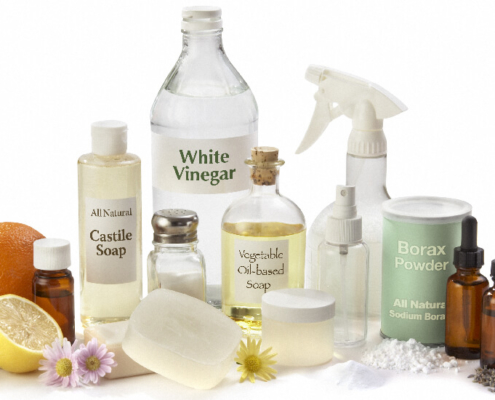Stain Guide: How to Get it Out
No matter how careful you are, stains can occur at any time. Removing the toughest stains can be quite a challenge. Whether it is oil, wine, cosmetics, ink, paint, or any other substance, you will likely have to devote considerable time and effort to get the stain out.
Stains can even be more problematic with white or light-colored clothing. Often times, it seems that the lighter clothes are, the more prone they are to staining.
The good news is that most stains can actually be removed fairly easily. Others will require more time and effort, of course. But there are surprisingly few stains that you can’t at least improve slightly with common household items.
Here we provide some proven stain removal solutions that can help you get the most stubborn stains out. With any luck, these methods may even make your stained clothes look close to brand-new.
Oil
Oil is one of the most common causes of stains, but it is actually pretty easy to remove. You do need a bit of free time and elbow grease, but you should be able to get rid of most of the stain with items that you probably already have around the house.
For this, you will need dish soap, a toothbrush, baking soda, and paper towels. Simply dab at the oil spot with the paper towel and press on both sides to absorb as much oil as possible.
Next, sprinkle some baking soda over the affected spot. Leave the baking soda for 30 minutes to an hour, and then scrub the fabric with the toothbrush.
Wine
Wine stains are also fairly common. Although not quite as easy to remove as oil stains, they can usually be dealt with so that they are barely noticeable.
The methods for removing wine stains vary depending on the fabric to be treated. For carpets and rugs, simply use a paper towel to blot as much of it as you can, then cover the spot with salt until it dries up.
For clothes, mix equal parts of hydrogen peroxide and dishwashing detergent. Use this mixture to wash the clothes as usual. You could also use a mixture of laundry detergent and white vinegar.
Cosmetics
Makeup and lipstick stains can actually be quite challenging to remove. Because most lipstick is oil-based, you might get better results by using an oil-based cleaner to remove the stain. You could also use a grease-removing soap or plain isopropyl alcohol.
Stains caused by foundation and self-tanner can be removed with hydrogen peroxide or liquid detergent.
Stains caused by deodorants tend to be the most difficult to remove. For these, you should rub a pair of dryer sheets or nylon stockings against the spot where the deodorant has left its mark.
Ink
Ink stains can be removed fairly easily, although you will have to get on it as soon as possible. For such stains, you should dab some salt on the affected spot with a wet paper towel. Try to do it as gently as possible to avoid forcing the ink deeper into the fabric. Afterwards, simply brush the salt off and repeat if necessary.
You could also make an effective ink removal solution by mixing together two tablespoons of lemon juice and two tablespoons of cream of tartar. Other solutions that are proven to effectively remove ink stains are hairspray, corn starch, nail polish remover, toothpaste, rubbing alcohol, vinegar, sandpaper, and even butter or shortening.
Paint
When dealing with paint stains, it would be helpful to first determine whether the stain was caused by an oil-based or water-based paint.
For oil-based paint, you should first try to remove as much of the paint as possible with a spoon or a knife. You can then blot the rest of it out, and brush off any remnants of the paint.
Water-based paints are usually easier to deal with. As with oil-based paints, you should first try to scrape off as much of the paint as possible. You will usually get good results by softening up the stain with dish soap, water, or turpentine.
Other Common Spills
Various other substances can cause stains. Pets, scuff marks, juice, coffee, blood, mud, and grass–all these can stain your clothes to varying degrees.
Stains left by your pet can usually be removed with the same paper towel, vinegar, and baking soda solution described previously.
For scuff marks, you might find it necessary to use a dedicated stain removal solution.
Coffee stains are commonly dealt with by blotting. A solution of one tablespoon of dish soap, one tablespoon of vinegar, and two cups of warm water can be dabbed on with a paper towel for excellent results.
Blood stains are usually pretty stubborn, and you will need a considerable amount of elbow grease to get them out. If the stain is fresh, try washing off as much of the blood as possible with cold water. Otherwise, try a solution made with two cups of water mixed with dishwashing liquid. For more stubborn stains, try to mix in a tablespoon of ammonia in the soap solution.
Mud stains are best dealt with by vacuuming the mud off of the affected area. You can then treat the area with a mixture of two cups of warm water and one tablespoon of dishwashing liquid. Mild laundry detergent and cold water will usually do the trick for grass stains.
These are only some of the most effective stain removal solutions available. There are a lot more to try out, and we encourage you to check out the The Cleaning Institute site for more tips on how to get rid of pesky stains.
Meta description: Stains can be caused by anything from oil to wine, cosmetics to ink, and more. Tough solutions may be necessary to get rid of the most stubborn stains.






